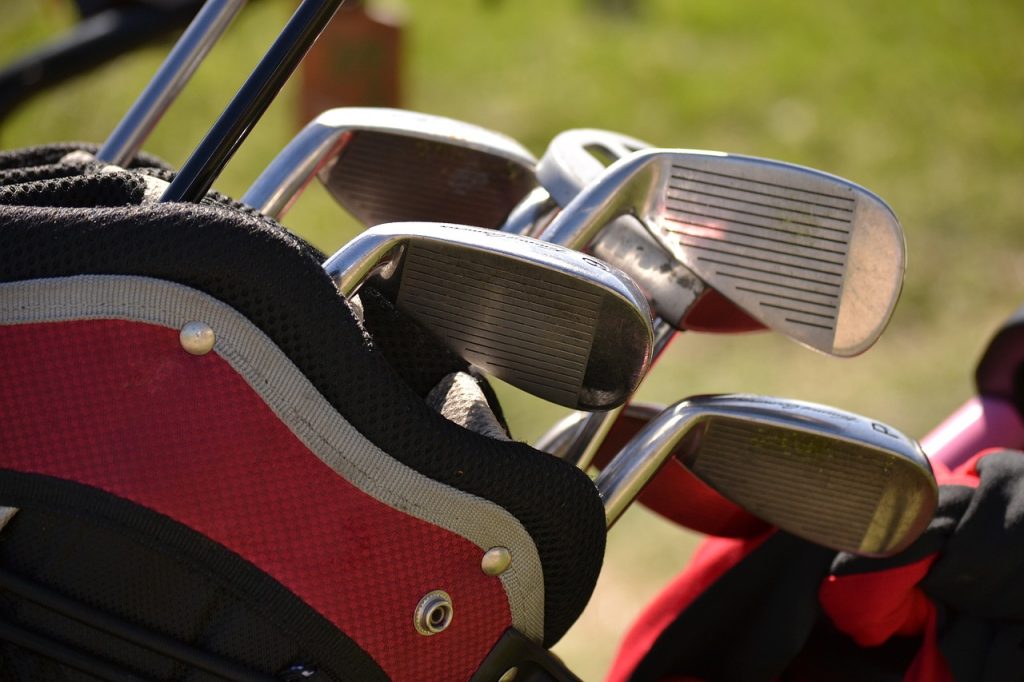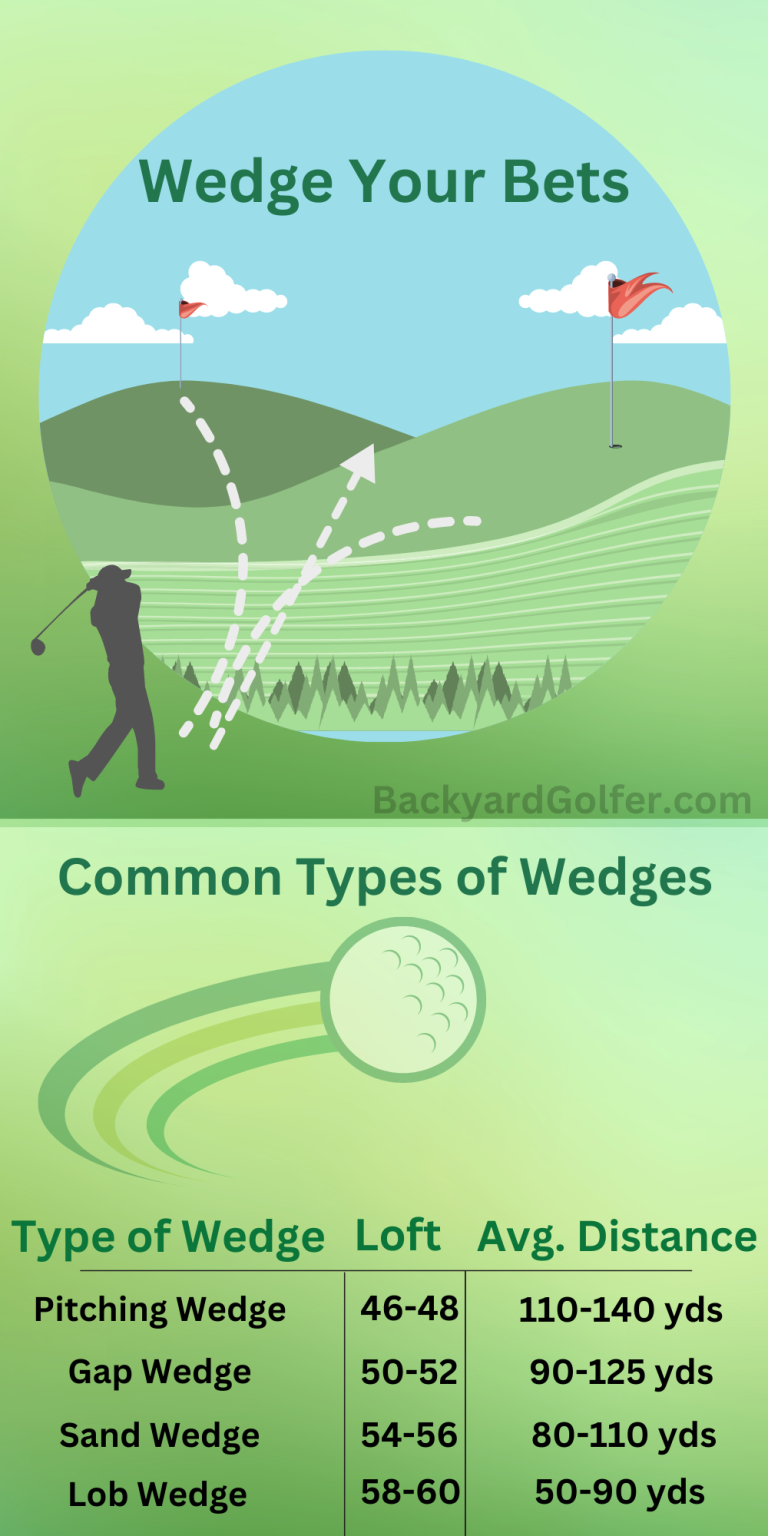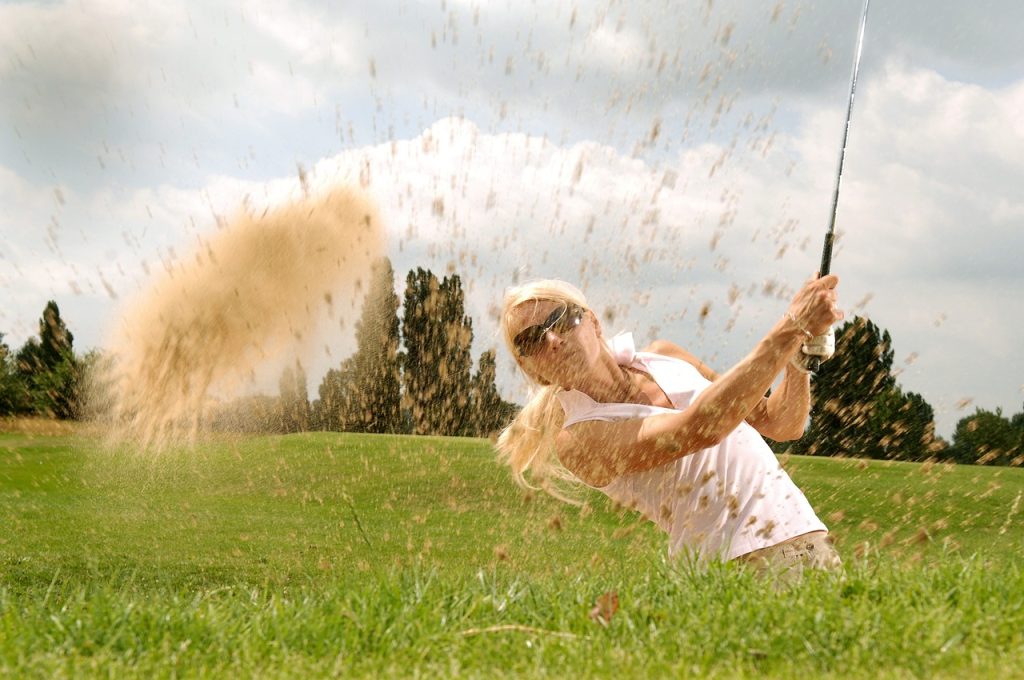Table of Contents
TogglePurchasing golf wedges can be a bit confusing initially, especially for beginners or those looking to upgrade their equipment. The question of, how to buy golf wedges, comes with several different answers.
With a wide range of options available in the market, it is important to understand the different aspects of golf wedges and how to make an informed decision.
In this article, we will guide you through the process of buying golf wedges, covering everything from understanding the different types of wedges to considering important factors before making a purchase.

Types of Golf Wedges
Before diving into the buying process, it is essential to familiarize yourself with the different types of golf wedges available. Understanding the purpose and characteristics of each wedge will help you make a suitable choice based on your skill level and playing style. Here are the three main types of golf wedges:
1. Pitching Wedges (PW): Pitching wedges have the highest loft among the wedges and are typically included in a golf set. They are designed for shots that require shorter distances and higher trajectory, usually around 110-140 yards.
Pitching wedges are versatile clubs that can be used for a variety of shots. They are commonly used for full shots, approach shots, and even chip shots around the green. The high loft of pitching wedges allows the ball to get a lot of height, making it easier to clear obstacles such as trees or bunkers. Additionally, the higher trajectory of the ball gives it a softer landing, allowing it to stop quickly on the green.
2. Gap Wedges (GW): The gap wedge is designed to fill the “gap” in distance between the pitching wedge and the sand wedge. It allows golfers to have better control over their approach shots when the distance is too short for a full swing with the pitching wedge but too long for a comfortable shot with the sand wedge.
3. Sand Wedges (SW): Sand wedges are primarily used for bunker shots and shots from soft lies. They have a higher loft than pitching wedges, which allows the ball to get out of bunkers or rough areas more easily. The loft of sand wedges usually ranges from 54-56 degrees.
Sand wedges are designed with a wider sole and more bounce to help the club glide through the sand without digging in. The extra loft of the sand wedge allows the ball to pop up quickly and land softly on the green. In addition to bunker shots, sand wedges can also be used for shots from heavy rough or fluffy lies around the green.
4. Lob Wedges (LW): Lob wedges have the highest loft among all the wedges, usually ranging from 58-60 degrees. They are ideal for shots that require a steep trajectory and short distances, such as hitting over hazards or getting close to the pin from a challenging lie.
Lob wedges are specialty clubs that are used for delicate shots around the green. They are designed to hit the ball high in the air and make it stop quickly on the green. Lob wedges are particularly useful for shots where you need to carry the ball over a bunker, water hazard, or other obstacles. They require a precise swing and good touch to control the distance and spin of the ball.
Refer to our golf wedge infograpic below for a visual chart of the different wedges.

Factors to Consider
Now that you are familiar with the different types of golf wedges, let’s delve into the factors you should consider when purchasing one:
1. Loft
The loft of a golf wedge plays a crucial role in determining its performance. The loft angle is responsible for the height and distance the ball can achieve. The higher the loft, the higher the trajectory and shorter the distance covered. Consider your playing style and the shots you frequently encounter to determine the ideal loft angle for your golf wedge.
When choosing the loft of your golf wedge, it’s important to consider the gaps between your other clubs. You want to ensure that there is a consistent and even distribution of distances between each club in your bag. For example, if your pitching wedge has a loft of 46 degrees and your 9-iron has a loft of 42 degrees, you may consider a gap wedge with a loft of around 50 degrees to fill the distance between them. This will help you have more control over your shots and give you more options around the green.
2. Bounce
Bounce refers to the angle between the leading edge and the lowest point of the sole. It helps the club glide through the turf without digging into the ground, especially on softer surfaces. Higher bounce wedges are suitable for soft conditions, while lower bounce wedges work well on firmer surfaces. Assess the course conditions you typically play on to choose the appropriate bounce for your wedge.
3. Club Head Design
Golf wedges come in various club head designs, including cavity back, muscle back, and blade. Each design offers different benefits and suits different playing styles.
– Cavity Back: Cavity back wedges have a larger sweet spot, providing forgiveness and stability. They are suitable for beginners and players looking for more forgiveness on their shots.
Cavity back wedges have a hollowed-out back, which redistributes weight to the perimeter of the clubhead. This design increases forgiveness and helps stabilize off-center hits. The larger sweet spot makes it easier to get the ball in the air and maintain distance control, even on mishits.
– Muscle Back: Muscle back wedges offer a smaller sweet spot but provide more control and feel. They are preferred by experienced players who prioritize shot shaping and precision.
Muscle back wedges have a solid back with a center of gravity placed directly behind the center of the clubface. This design allows for more workability and precise shot shaping. Skilled players can manipulate the clubface to control trajectory, spin, and shot shape. The smaller sweet spot requires more consistent ball striking for optimal results.
– Blade: Blade wedges are designed for skilled players seeking maximum control and feel. They have a smaller sweet spot, demanding precise contact and consistent swings.
Blade wedges have a classic design with a thin topline and minimal offset. They offer the ultimate in control and shot-making capabilities. Skilled players who can consistently strike the ball in the center of the clubface will appreciate the feedback and responsiveness of blade wedges. However, they require a high level of skill and consistency to achieve desired results.
Choose a club head design that aligns with your skill level and desired playing experience. If you are a beginner or high-handicap player, a cavity back wedge may be more forgiving and help you improve your short game. On the other hand, if you are an experienced player with a consistent swing, a muscle back or blade wedge may provide the control and feel you desire.
4. Club Shaft Material
The material used for the shaft of a golf wedge affects its feel and performance. Steel and graphite are the two primary options available. Steel shafts are more common, offering durability, consistency, and control. Graphite shafts, on the other hand, are lighter and can help increase swing speed, making them suitable for players with slower swing speeds or seeking additional distance.
5. Price
Consider your budget when buying golf wedges, as prices can vary greatly depending on the brand, materials used, and features offered. While it is tempting to invest in high-end wedges, it is essential to balance your budget with your needs. Look for wedges that offer a combination of quality, performance, and value for money.
It’s worth noting that the most expensive wedges are not always the best option for every golfer. Different brands and models offer varying levels of performance and features at different price points. Assess your skill level, playing frequency, and future goals to determine the appropriate price range for your golf wedges. This really applies to any type of golf clubs, not just wedges.
Conclusion - How To Buy Golf Clubs
Buying golf wedges requires careful consideration of several factors, such as loft, bounce, club head design, shaft material, and price. By understanding the different types of wedges and evaluating your playing style, you can make an informed decision that enhances your game. Remember to try out different wedges and seek advice from professionals or experienced golfers to find the perfect fit for your golf bag.
FAQ
1. What are the different types of golf wedges?
– Answer: The different types of golf wedges are pitching wedges (PW), sand wedges (SW), and lob wedges (LW).
2. How does the loft of a golf wedge affect its performance?
– Answer: The loft angle of a golf wedge determines the height and distance the ball can achieve. Higher loft results in a higher trajectory and shorter distance, while lower loft produces a lower trajectory and longer distance.
3. What is bounce in a golf wedge and how does it affect shots?
– Answer: Bounce refers to the angle between the leading edge and the lowest point of the sole. It helps the club glide through the turf without digging in. Higher bounce wedges are suitable for soft conditions, while lower bounce wedges work well on firmer surfaces.
4. What are the different club head designs for golf wedges?
– Answer: The different club head designs for golf wedges are cavity back, muscle back, and blade. Cavity back wedges offer forgiveness and stability, muscle back wedges provide control and feel, and blade wedges offer maximum control and feel.
Bonus Material
What Golf Wedges Should I Have in My Bag
If you’re just starting out, don’t stress out about the details of the wedge options. Having just a pitching wedge should be good enough until your skills improve. Many golf sets usually come with one wedge and that’s just fine. Focus more on learning good technique at first. A $300 wedge isn’t going to be much better than a $150 wedge if your skills are a 1 out of 10.
Check Out This Article Next – Online Free Golf Lessons
